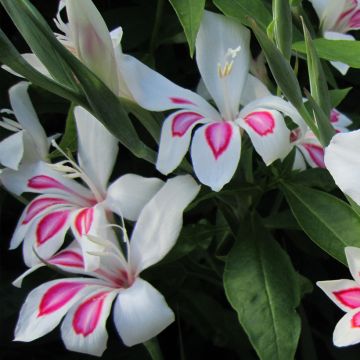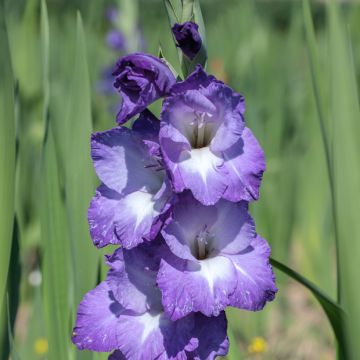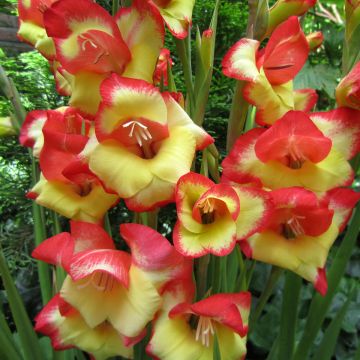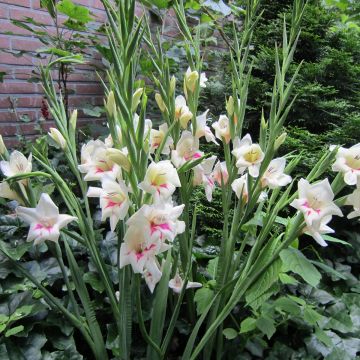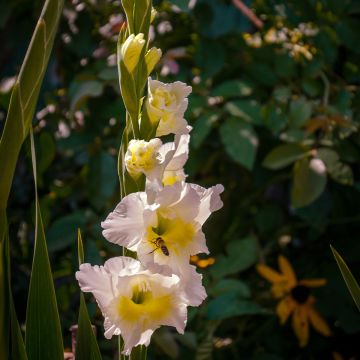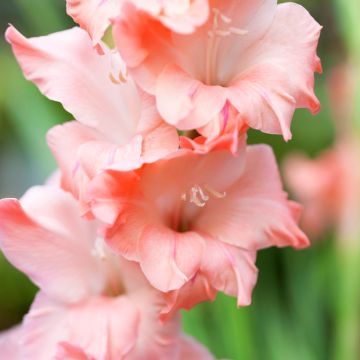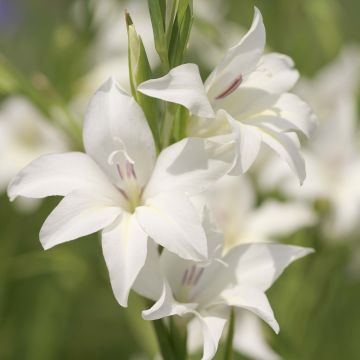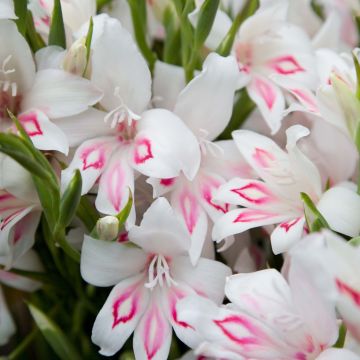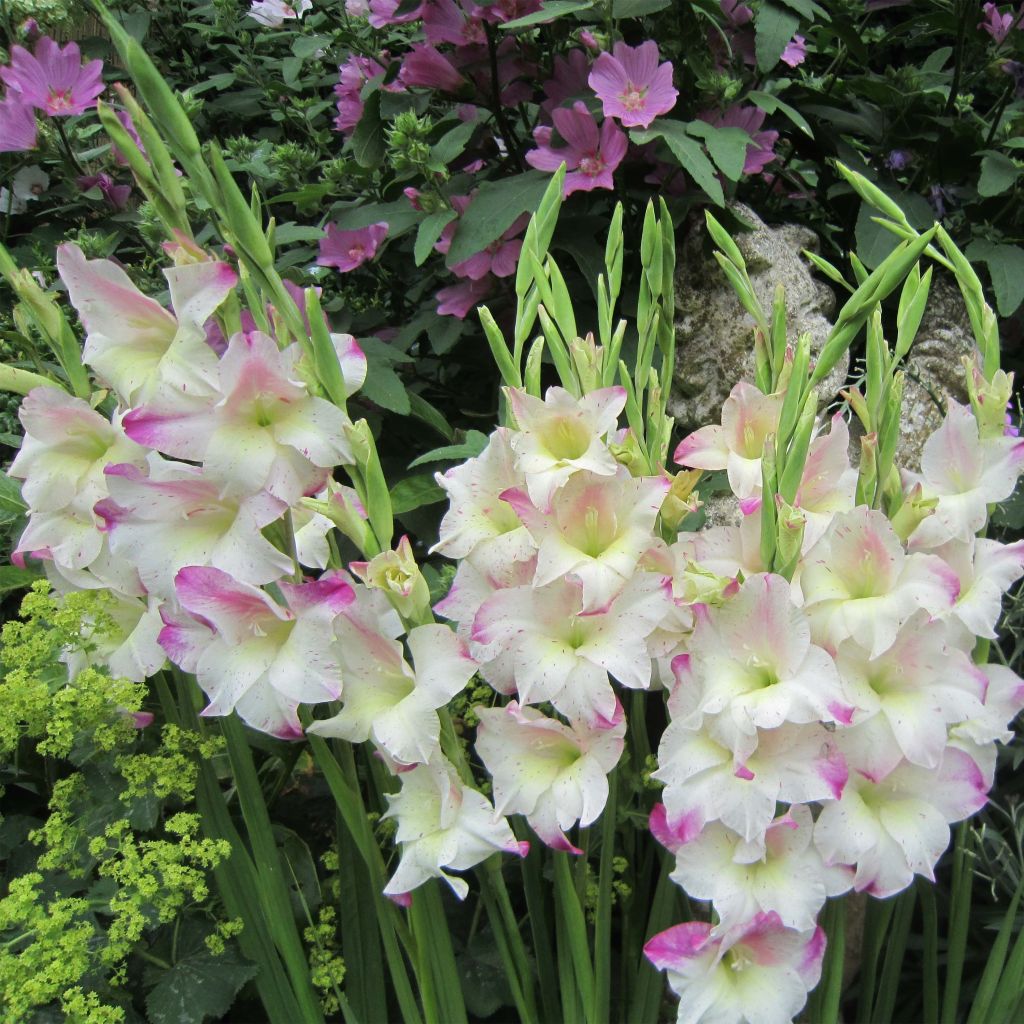

Gladiolus Frozen Sparks - Sword Lily
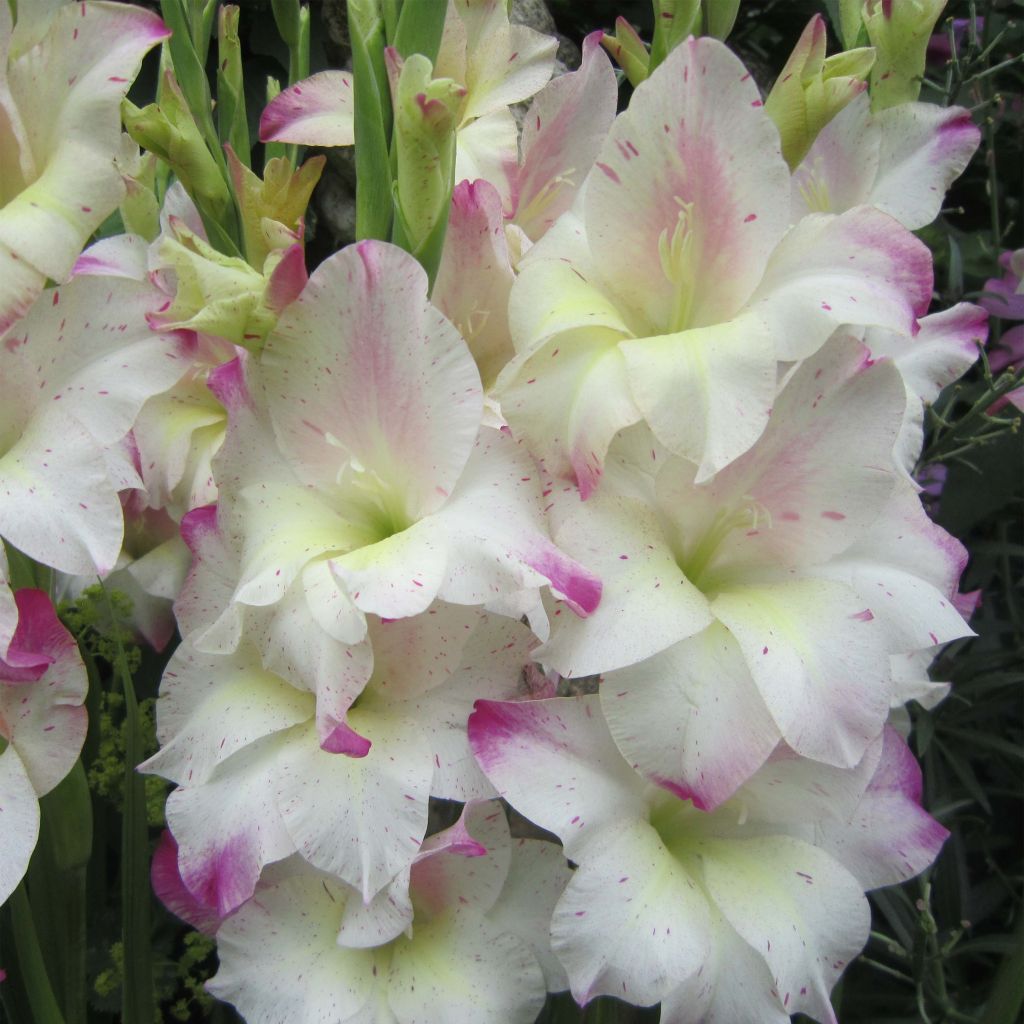

Gladiolus Frozen Sparks - Sword Lily
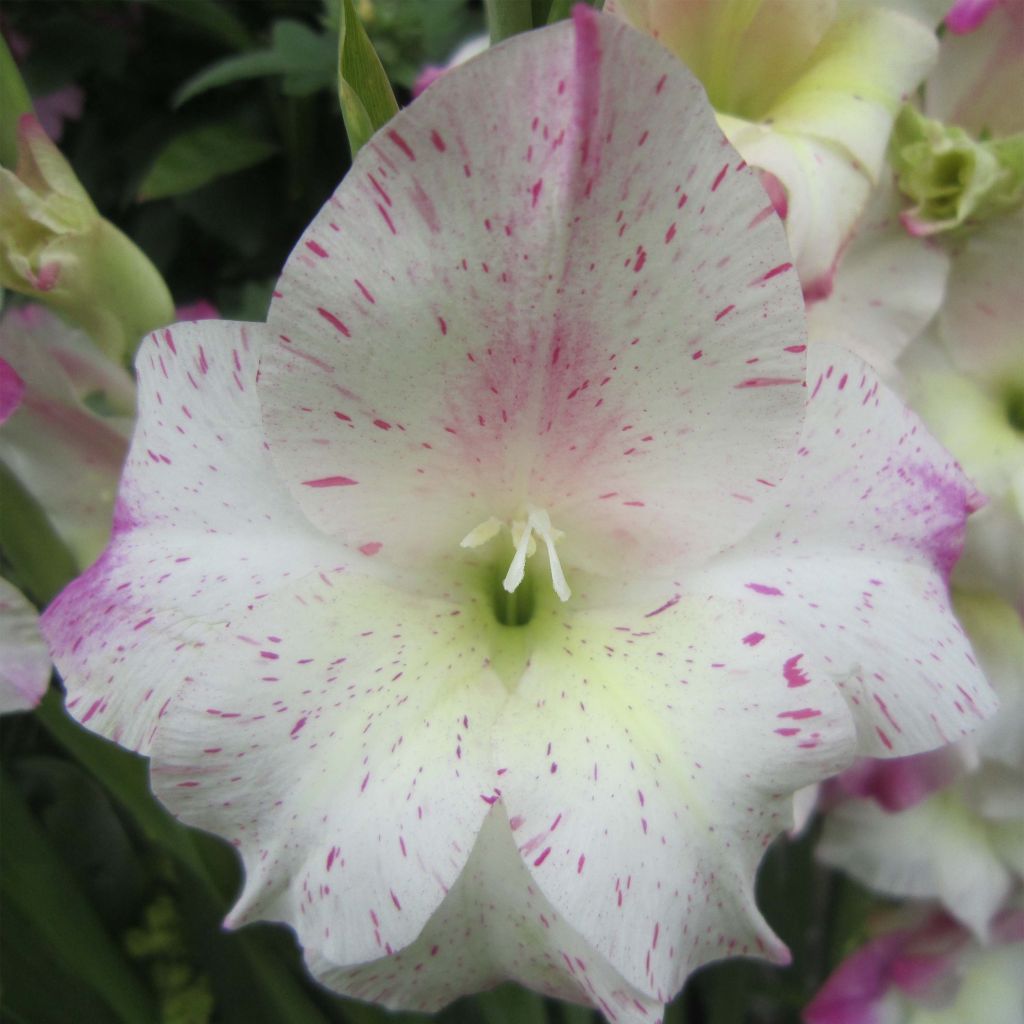

Gladiolus Frozen Sparks - Sword Lily
Gladiolus Frozen Sparks - Sword Lily
Gladiolus x colvillei Frozen Sparks
Colville's Gladiolus, Sword Lily
Beautiful Gladioli planted in clay soil to which I mixed compost around the bulbs. The flowers are magnificent and perfectly match the photos. However, I strongly advise staking them.
Maëva, 15/08/2021
Why not try an alternative variety in stock?
View all →This plant carries a 6 months recovery warranty
More information
We guarantee the quality of our plants for a full growing cycle, and will replace at our expense any plant that fails to recover under normal climatic and planting conditions.
From €5.90 for pickup delivery and €6.90 for home delivery
Express home delivery from €8.90.
Does this plant fit my garden?
Set up your Plantfit profile →
Description
The Gladiolus colvillii 'Frozen Sparks' is a variety of hybrid gladiolus that is still difficult to find in horticultural trade. It stands out from other so-called dwarf selections with relatively tall flower stalks and its large, sparkling flowers in white touched with purplish pink. They typically bloom as early as June, along flower stalks surrounded by thin foliage gathered in a basal tuft. This gladiolus has a good chance of winning over detractors of this plant, often considered too rigid and artificial looking, without disappointing fans of chic bouquets. As sparkling as it is elegant, it blends well with other plants in the garden and resists better, in open ground, your not too harsh winters.
The genus Gladiolus belongs to the Iridaceae family, cultivated varieties are hybrids classified into 3 main groups: Grandiflorus (large-flowered), Primulinus (early) and Nanus (butterflies). The Gladiolus colvillii is the first known hybrid in cultivation, obtained in England in 1823, by crossing the Gladiolus cardinalis with the G. tristis. In this group, the flowers are rather small, irregularly arranged on stems bearing up to 10 florets. The lower petal of each flower, star-shaped, has a darker central zone.
'Frozen Sparks', registered in 2017, is a very different cultivar, which has inherited from its ancestor Gladiolus tristis a beautiful stature and large pointed-petal flowers. It is a perennial herbaceous plant, with thin, very dark green sword-shaped leaves, arranged in a fan shape and forming a tuft 40 cm (16in) high. The leaves are topped by one to three spikes, 85 cm (34in) tall. The flowers with 6 unequal petals measure approximately 7 cm (3in) in diameter. They resemble small lilies and are closely arranged on slender stems. The flowers open gradually from bottom to top and form beautiful flower stalks. The storage organ is a corm, which is a swollen stem with scales. Each corm will produce 2 or 3 flower stalks.
Gladioli and their long colourful flower stalks are emblematic of the 70s and slightly stiff floral arrangements. While they are irreplaceable in bouquets, in gardens, their silhouette needs the presence of plants with lush foliage or airy flowers that will showcase their abundant but romantically wild blooming. Far from this archetype, the Gladiolus colvillii 'Frozen Sparks' fits in simple perennial beds. It pairs well with ground cover roses ('The Fairy', 'Larissa'), small grasses (Stipa pennata or tenuifolia), forget-me-nots or penstemons for example. Play with the vibrant blue of perennial flax and the soft pink of baby's breath for brilliance, and add here and there some silver foliage (stachys, artemisia). For making bouquets, cut the flower stalks when the first floret starts to open. Plant them at two-week intervals from early spring to late June to have flowers in the house and garden all summer long.
The gladiolus owes its name to the shape of its sword-like leaves, derived from the Latin gladius. Its wild forms were often represented in jewelry or on carpets and fabrics made by the Semitic people before the Christian era.
Report an error about the product description
Gladiolus Frozen Sparks - Sword Lily in pictures




Plant habit
Flowering
Foliage
Botanical data
Gladiolus
x colvillei
Frozen Sparks
Iridaceae
Colville's Gladiolus, Sword Lily
Cultivar or hybrid
Other Gladioli
Planting and care
Plant the bulbs of the Colvillii 'Frozen Sparks' Gladiolus in well-drained soil and in a sunny location, sheltered from the wind. Bury them under 8 to 10 cm (3 to 4in) of soil, spaced 10 to 15 cm (4 to 6in) apart.
The Frozen Sparks Gladiolus likes rich, fertile but well-drained soils, so sandy soils are preferred and compact clay should be avoided. Avoid using manure to fertilise the soil, as it promotes bulb rot. The plant should not lack water during its growth and flowering period, but its bulbs appreciate being dry during the dormant period. The corms of this variety can overwinter in the ground, in well-drained, very healthy soil, covered with a thick mulch to prevent damage from severe frost. In very cold regions, the plants will be dug up as soon as the leaves have yellowed, to be stored under cover and kept dry, sheltered from heat and frost. You can also grow them in pots that you will protect from the cold (20 bulbs for a pot of 20 to 22 cm (8 to 9in)).
Planting period
Intended location
Care
-
, onOrder confirmed
Reply from on Promesse de fleurs
Haven't found what you were looking for?
Hardiness is the lowest winter temperature a plant can endure without suffering serious damage or even dying. However, hardiness is affected by location (a sheltered area, such as a patio), protection (winter cover) and soil type (hardiness is improved by well-drained soil).

Photo Sharing Terms & Conditions
In order to encourage gardeners to interact and share their experiences, Promesse de fleurs offers various media enabling content to be uploaded onto its Site - in particular via the ‘Photo sharing’ module.
The User agrees to refrain from:
- Posting any content that is illegal, prejudicial, insulting, racist, inciteful to hatred, revisionist, contrary to public decency, that infringes on privacy or on the privacy rights of third parties, in particular the publicity rights of persons and goods, intellectual property rights, or the right to privacy.
- Submitting content on behalf of a third party;
- Impersonate the identity of a third party and/or publish any personal information about a third party;
In general, the User undertakes to refrain from any unethical behaviour.
All Content (in particular text, comments, files, images, photos, videos, creative works, etc.), which may be subject to property or intellectual property rights, image or other private rights, shall remain the property of the User, subject to the limited rights granted by the terms of the licence granted by Promesse de fleurs as stated below. Users are at liberty to publish or not to publish such Content on the Site, notably via the ‘Photo Sharing’ facility, and accept that this Content shall be made public and freely accessible, notably on the Internet.
Users further acknowledge, undertake to have ,and guarantee that they hold all necessary rights and permissions to publish such material on the Site, in particular with regard to the legislation in force pertaining to any privacy, property, intellectual property, image, or contractual rights, or rights of any other nature. By publishing such Content on the Site, Users acknowledge accepting full liability as publishers of the Content within the meaning of the law, and grant Promesse de fleurs, free of charge, an inclusive, worldwide licence for the said Content for the entire duration of its publication, including all reproduction, representation, up/downloading, displaying, performing, transmission, and storage rights.
Users also grant permission for their name to be linked to the Content and accept that this link may not always be made available.
By engaging in posting material, Users consent to their Content becoming automatically accessible on the Internet, in particular on other sites and/or blogs and/or web pages of the Promesse de fleurs site, including in particular social pages and the Promesse de fleurs catalogue.
Users may secure the removal of entrusted content free of charge by issuing a simple request via our contact form.
The flowering period indicated on our website applies to countries and regions located in USDA zone 8 (France, the United Kingdom, Ireland, the Netherlands, etc.)
It will vary according to where you live:
- In zones 9 to 10 (Italy, Spain, Greece, etc.), flowering will occur about 2 to 4 weeks earlier.
- In zones 6 to 7 (Germany, Poland, Slovenia, and lower mountainous regions), flowering will be delayed by 2 to 3 weeks.
- In zone 5 (Central Europe, Scandinavia), blooming will be delayed by 3 to 5 weeks.
In temperate climates, pruning of spring-flowering shrubs (forsythia, spireas, etc.) should be done just after flowering.
Pruning of summer-flowering shrubs (Indian Lilac, Perovskia, etc.) can be done in winter or spring.
In cold regions as well as with frost-sensitive plants, avoid pruning too early when severe frosts may still occur.
The planting period indicated on our website applies to countries and regions located in USDA zone 8 (France, United Kingdom, Ireland, Netherlands).
It will vary according to where you live:
- In Mediterranean zones (Marseille, Madrid, Milan, etc.), autumn and winter are the best planting periods.
- In continental zones (Strasbourg, Munich, Vienna, etc.), delay planting by 2 to 3 weeks in spring and bring it forward by 2 to 4 weeks in autumn.
- In mountainous regions (the Alps, Pyrenees, Carpathians, etc.), it is best to plant in late spring (May-June) or late summer (August-September).
The harvesting period indicated on our website applies to countries and regions in USDA zone 8 (France, England, Ireland, the Netherlands).
In colder areas (Scandinavia, Poland, Austria...) fruit and vegetable harvests are likely to be delayed by 3-4 weeks.
In warmer areas (Italy, Spain, Greece, etc.), harvesting will probably take place earlier, depending on weather conditions.
The sowing periods indicated on our website apply to countries and regions within USDA Zone 8 (France, UK, Ireland, Netherlands).
In colder areas (Scandinavia, Poland, Austria...), delay any outdoor sowing by 3-4 weeks, or sow under glass.
In warmer climes (Italy, Spain, Greece, etc.), bring outdoor sowing forward by a few weeks.



































